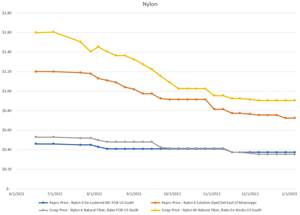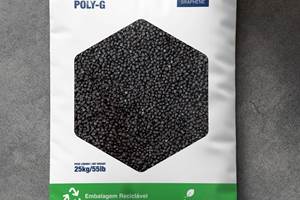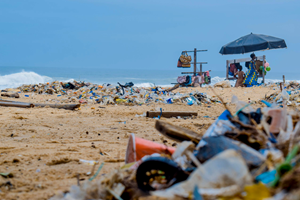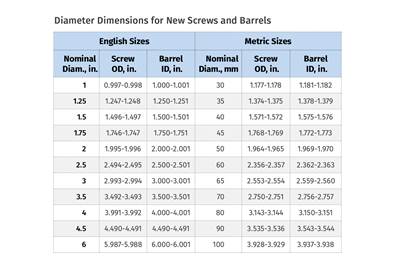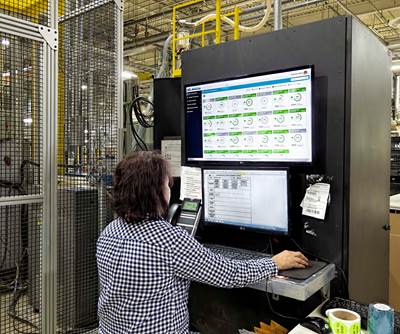New Plastic Technologies & Alternative Bioplastics Augment Flexible Plastic Packaging Growth
Frost & Sullivan study sees promising market growth opportunities within a four-year period.
London-based consultancy Frost & Sullivan new study, Analysis of the Global Flexible Plastic Packaging Market, Forecast to 2023, says growth opportunities look promising for the flexible plastic packaging market within a four-year period. According to this study, shifting consumer preferences and an evolving retail landscape have boosted the demand for flexible packaging with features such as improved shelf life, convenience, and ease of use.
Moreover, a growing need for innovative flexible plastic packaging options that meet recyclability, regulatory, and sustainability standards are further factors augmenting lucrative market expansion possibilities. This study forecasts the global flexible plastics packaging market to generate revenues of $172.29 million from 2018 to 2023 with a steady CAGR of 3.2% during this period.
Said senior research analyst Prateeksha Kaul, “Due to current regulatory, consumer, and environmental pressures, manufacturers are steering their strategies towards circularity and leveraged new plastic technologies to develop recyclable and sustainable solutions that include specific properties such as oxygen, moisture, light, puncture, and chemical resistance, and easy-tear propagation. Further key focus areas for manufacturers include the development of alternative bioplastics solutions such as polybutylene succinate and biopolyproplyene. However, competitive factors like price and the disposal of bioplastics will need to be examined to ensure successful usage.”
From a regional perspective, Asia-Pacific is expected to witness the highest growth rate during the forecast period due to the increasing number of dual-income households. While North America faces challenging competition from emerging markets and is set to experience average growth, European regulations regarding recyclability and sustainability of plastics used in packaging are expected to impact this region.
Noted Kaul, “The persistent growth of the middle-class population in Asia-Pacific is set to be the prime driver for flexible plastic demand owing to the low cost of production. Furthermore, an uptick in consumers using eCommerce platforms will drive greater use of flexible plastic packaging associated with shipping products.”
From a competitor position, the supply base is fragmented with multinational companies playing a dominant role in most regions; the top five participants typically cater to less than 30% of the market.
To gain a competitive advantage, Kaul recommends players emulate innovative companies such as Amcor, Berry, Huhtamaki, and Mondi, and introduce product innovation aimed at sustainability, enhanced consumer convenience, and ensure higher recyclability.
Additional growth opportunities participants should aim to secure include:
▪ Expanding operations into emerging regions such as Asia-Pacific, where demand for flexible plastic packaging is expected to surge given the growing need for these products across end-applications.
▪ Introducing products that promote less use of natural resources, produce less waste, improve shelf-life, and are cost-effective.
▪ Increase production capabilities to cater to the growing demand for packaged foods such as ready-to-eat meals, frozen meals, snack foods, and cake mixes.
“Despite significant market expansion prospects, durability and the longevity of plastics imply that it takes a lot of effort to degrade, and flexible plastic like bags, films, and wrappers end up in landfills or oceans. Furthermore, plastic litter can also impact human health as it moves up the food chain. This, in turn, has exerted pressure on companies and manufacturers to find viable solutions, either by improving the recycling rate or focusing on producing alternatives to plastics,” noted Kaul.
The new study explores the industrial, technology, regulatory, and growth factors and trends that have shaped the global flexible plastic packaging market landscape, the challenges that lie ahead, and the opportunities that can be tapped. The research provides a detailed analysis of the growth opportunities for key players in this space. End industries analyzed include food & beverage, pharmaceuticals, personal care & cosmetics, and more. Raw material segmentation includes PE, PP and PET among others.
Related Content
Recycled Material Prices Show Stability Heading into 2023
After summer's steep drop, most prices leveled off in the second half.
Read MoreGerdau Graphene Launches “First” Graphene-Enhanced PE Additive Masterbatch for Extruded Packaging and More
The company has also partnered with conglomerate Sumitomo Corp. for distribution of its graphene-enhanced masterbatches in Japan.
Read MoreAutomotive Awards Highlight ‘Firsts,’ Emerging Technologies
Annual SPE event recognizes sustainability as a major theme.
Read MoreFungi Makes Meal of Polypropylene
University of Sydney researchers identify two strains of fungi that can biodegrade hard to recycle plastics like PP.
Read MoreRead Next
Troubleshooting Screw and Barrel Wear in Extrusion
Extruder screws and barrels will wear over time. If you are seeing a reduction in specific rate and higher discharge temperatures, wear is the likely culprit.
Read MoreLead the Conversation, Change the Conversation
Coverage of single-use plastics can be both misleading and demoralizing. Here are 10 tips for changing the perception of the plastics industry at your company and in your community.
Read MorePeople 4.0 – How to Get Buy-In from Your Staff for Industry 4.0 Systems
Implementing a production monitoring system as the foundation of a ‘smart factory’ is about integrating people with new technology as much as it is about integrating machines and computers. Here are tips from a company that has gone through the process.
Read More

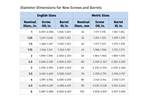

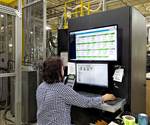
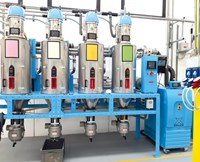









.png;maxWidth=300;quality=90)




